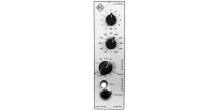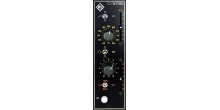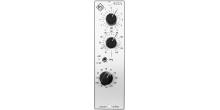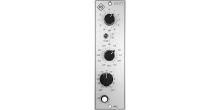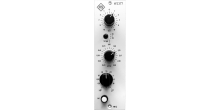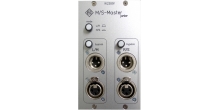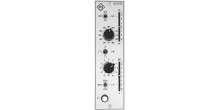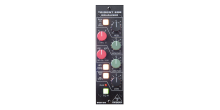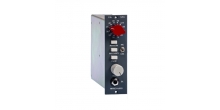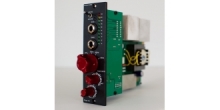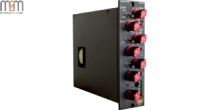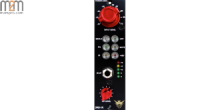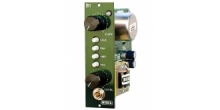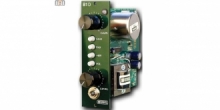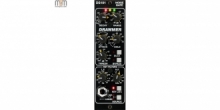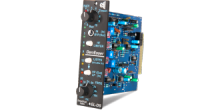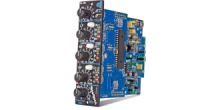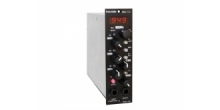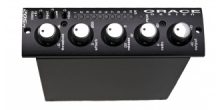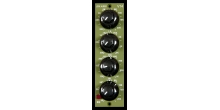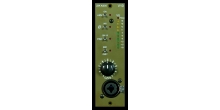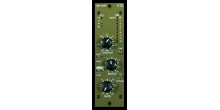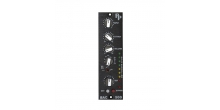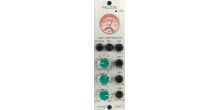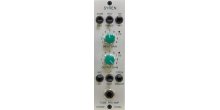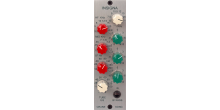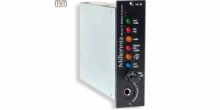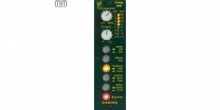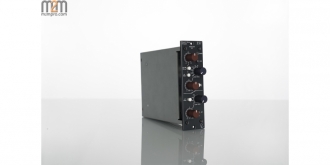 Agrandir l'image
Agrandir l'image
Equalizer Bypassed
| Noise: | Measured at Main Output, un-weighted, 22Hz-22kHz, source impedance 40 Ohms balanced. Better than -102dBV |
| Frequency Response | Main output, no load +/- 0.1dBu from 20Hz to 31.5kHz -1dB @ 120kHz |
| Maximum Output Level | 23.25dBu |
| Total Harmonic Distortion and Noise | @ 1kHz, +20dBu output level, no load. Better than 0.0025% @ 20Hz, +20dBu output level, no load. 0.13% Typical (2nd and 3rd harmonic) |
| High Pass Filter: | -2.7dB @ 80Hz |
| Slope: | 12dB/Octave |
Equalizer Engaged
| Noise: | Measured at Main Output, un-weighted, 22Hz-22kHz, source impedance 40 Ohms balanced. Better than -94dBV |
| Frequency Response | Main output, no load +/- 0.25dBu from 20Hz to 45kHz -2dB @ 120kHz |
| Maximum Output Level | 23dBu |
| Total Harmonic Distortion and Noise | @ 1kHz, +20dBu output level, no load. Better than 0.009% @ 20Hz, +20dBu output level, no load. 0.13% Typical (2nd and 3rd harmonic) |
| Power Requirements | 120mA on +16VDC 110ma on -16VDC |
RUPEF15439
Nouveau
RUPERT NEVE - 551

The 551 Inductor EQ is the only equalizer for the 500 Series actually designed by Rupert Neve. Featuring 3 bands of EQ inspired by Mr. Neve’s most prized vintage designs, along with custom-wound inductors, transformers and class-A gain blocks, the 551 brings the thick, powerful lows and sweet highs of Rupert’s classics to the 500-Series format for the very first time.
The "Best-Of" EQ
The 3-band, custom-tapped inductor EQ on the 551 was inspired by RND’s favorite portions of Rupert’s vintage EQ designs. The low frequency band is designed to produce a creamy, resonant bass response – however, unlike the vintage modules that inspired it, the LF band on the 551 can be used as either a shelf or a peak filter, adding punch, dimension, and control to your low end. The 551’s inductor midrange band is ideal for sweetening vocals and instruments while bringing them forward in a mix, and its proportional “Q” response makes it well-suited for minimizing problematic frequencies. The high frequency band is a hybrid vintage / modern design, blending inductor circuitry with capacitor-based topologies to achieve vintage tones with enhanced control. The High Pass filter is a 12dB/octave design with a fixed 80Hz frequency, and can be used in tandem with the low frequency EQ to add low-end presence without clouding the source material.
As Rupert originally intended with his most prized classic designs, each EQ section uses low-feedback, class-A discrete electronics to prevent low-level artifacts and harshness from detracting from the tonal shaping. However, this new circuit is a decidedly modern design with updated techniques and components that were simply not available 35 years ago, and should not be considered a “clone”.
Both the high and low band can be switched from shelf to peak curves and offer 15 dB of boost or cut. The high band can be switched from 8 kHz to 16 kHz, and the low band can be selected at 35 Hz, 60 Hz, 100 Hz or 220 Hz. The inductor based Mid Band offers 6 center frequencies; 200 Hz, 350 Hz, 700 Hz, 1.5 kHz, 3 kHz and 6 kHz. The Mid Band also has a “Mid Hi Q” switch to narrow the bandwidth (increase the Q) of the filter.
Features And Specs
Equalizer Bypassed
| Noise: | Measured at Main Output, un-weighted, 22Hz-22kHz, source impedance 40 Ohms balanced. Better than -102dBV |
| Frequency Response | Main output, no load +/- 0.1dBu from 20Hz to 31.5kHz -1dB @ 120kHz |
| Maximum Output Level | 23.25dBu |
| Total Harmonic Distortion and Noise | @ 1kHz, +20dBu output level, no load. Better than 0.0025% @ 20Hz, +20dBu output level, no load. 0.13% Typical (2nd and 3rd harmonic) |
| High Pass Filter: | -2.7dB @ 80Hz |
| Slope: | 12dB/Octave |
Equalizer Engaged
| Noise: | Measured at Main Output, un-weighted, 22Hz-22kHz, source impedance 40 Ohms balanced. Better than -94dBV |
| Frequency Response | Main output, no load +/- 0.25dBu from 20Hz to 45kHz -2dB @ 120kHz |
| Maximum Output Level | 23dBu |
| Total Harmonic Distortion and Noise | @ 1kHz, +20dBu output level, no load. Better than 0.009% @ 20Hz, +20dBu output level, no load. 0.13% Typical (2nd and 3rd harmonic) |
| Power Requirements | 120mA on +16VDC 110ma on -16VDC |
| Type de matériel | Egaliseurs |




